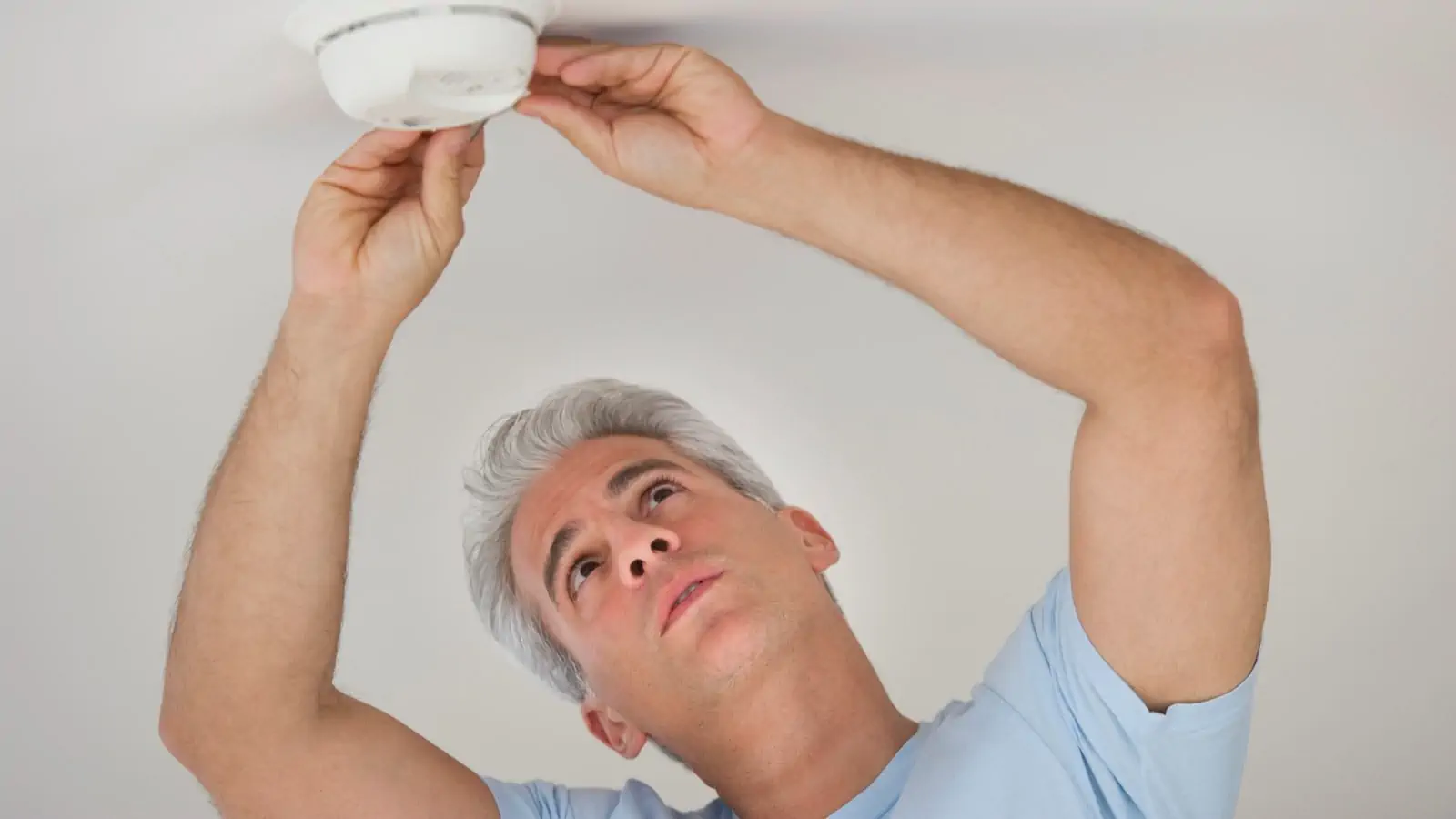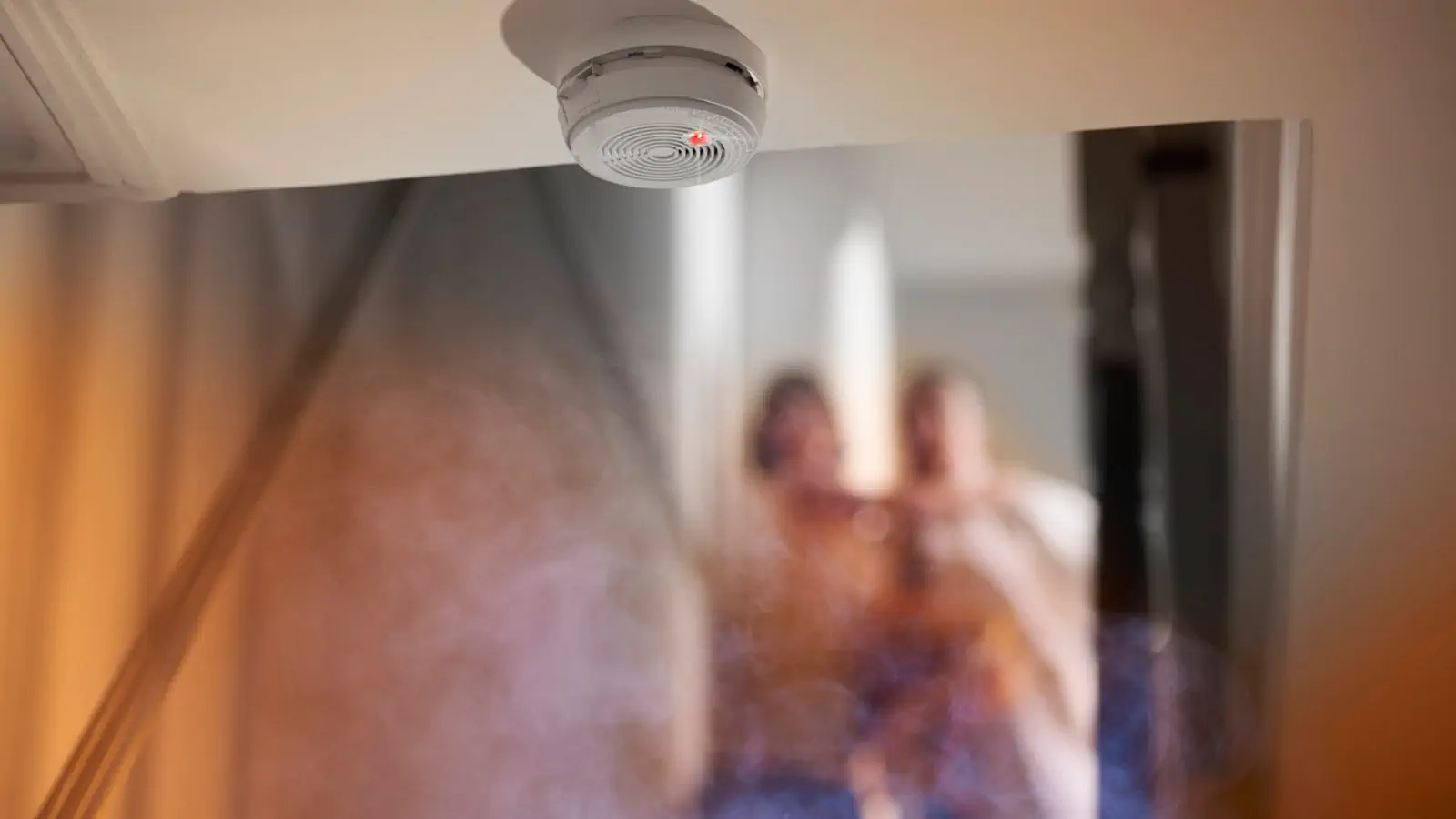Smoke detectors serve as the first line of defense against fires at home. By alerting you to potential hazards, they give you valuable time to respond. However, what should you do when your smoke detector starts beeping? Responding promptly to a beeping smoke detector is crucial. If the sound indicates a real alarm, it could give you enough time to extinguish a small fire before it spreads. If it's just a warning chirp, addressing the issue will keep your detector functioning properly. Here's a helpful guide to help you understand why your smoke detector might be beeping and what actions you should take. There are several reasons why a smoke detector might beep. Knowing the sound and possible causes can help you quickly resolve any issues. All sounds from your smoke or carbon monoxide detector aren't the same. Tone: A loud, continuous alarm or a series of three beeps that repeat. Tone: A series of four beeps that repeat. A short, single, intermittent chirp sound typically signals an issue with the detector itself rather than an emergency. It's important to fix the problem right away to ensure your detector remains operational in case of smoke or carbon monoxide. What the chirp sound from your smoke detector is telling you: A common cause of a chirping smoke detector is a low battery. Most battery-operated detectors will start beeping when the battery is nearly depleted. Dust and debris can build up inside the smoke detector, causing it to chirp. This can interfere with the sensor's ability to detect smoke effectively. Sometimes, a smoke detector might chirp due to a malfunction. It could be an internal issue that requires professional assistance. Hard-wired smoke detectors connect directly to your home’s electrical system. They often come with a battery backup for power outages. Here are some advantages of hard-wired detectors over plug-in or battery-powered models. Hard-wired smoke detectors are more reliable since they have a constant power source. This reduces the risk of the detector failing due to a dead battery. Many hard-wired smoke detectors are interconnected. This means that if one detector detects smoke, all detectors in the house will sound an alarm. This provides early warning and extra time to evacuate, especially in larger homes. With hard-wired smoke detectors, you don’t need to worry about changing batteries often. The battery backup only needs replacement occasionally. To keep your smoke detectors in optimal working condition, follow these safety tips: Test your smoke detectors at least once a month by pressing the test button. Replace the batteries at least once a year, or as recommended by the manufacturer. Install smoke detectors in key areas of your home: Avoid placing smoke detectors near windows, doors, or ducts where drafts might interfere with their operation. Keep your smoke detectors clean. Dust and debris can hinder their performance. Regularly vacuum or use compressed air to clean them. Replace smoke detectors every 10 years, as they can become less reliable over time. Having functional smoke detectors can also impact your homeowner’s insurance. Many insurance companies offer discounts if your home has smoke detectors. They may also require proof that your smoke detectors are in working order. If a fire occurs and your smoke detectors aren’t working, you could be held liable for any damages or injuries. Functional smoke detectors can provide evidence that you took reasonable steps to ensure safety. A beeping smoke detector can be annoying, but it’s also a critical warning sign. Understanding the common reasons for beeping and how to address them can make all the difference. Being proactive could save lives, property, and protect you from liability in the event of a fire. If you’re ready to install a hard-wired smoke or carbon monoxide detector in Alberta, call Rümi! Our friendly technicians can handle the installation and any mysterious beeps. Request Smoke & Carbon Monoxide Detectors today! unhoned tube, unhoned tubing, cold drawn tube, ready to Honed Tube, pre honed tube, cold drawn steel tube, cold drawn seamless tube, cold drawn tube suitable for honing, cold drawn steel tube suitable for honing, cold drawn seamless tube suitable for honing, cold drawn seamless steel tube suitable for honing unhoned tube, unhoned tubing, cold drawn tube, ready to honed tube Changzhou Chengxin Metal Products Co., Ltd , https://www.chengxinsteeltube.comWhy is my smoke detector beeping?
Beep or Chirp: Understand the Difference
Fire Alarm Beep
Carbon Monoxide Detector Beep
Chirps
Low Battery
What to Do:
Dust & Debris
What to Do:
Malfunction
What to Do:
Advantages of Hard-Wired Smoke Detectors

Reliability
Interconnected System
Less Frequent Battery Changes
Smoke Detector Safety Tips
Regular Testing
Proper Placement
Maintenance
Insurance & Liability
Better Safe Than Sorry

Smoke Detector Beeping? Here's What to Do.
